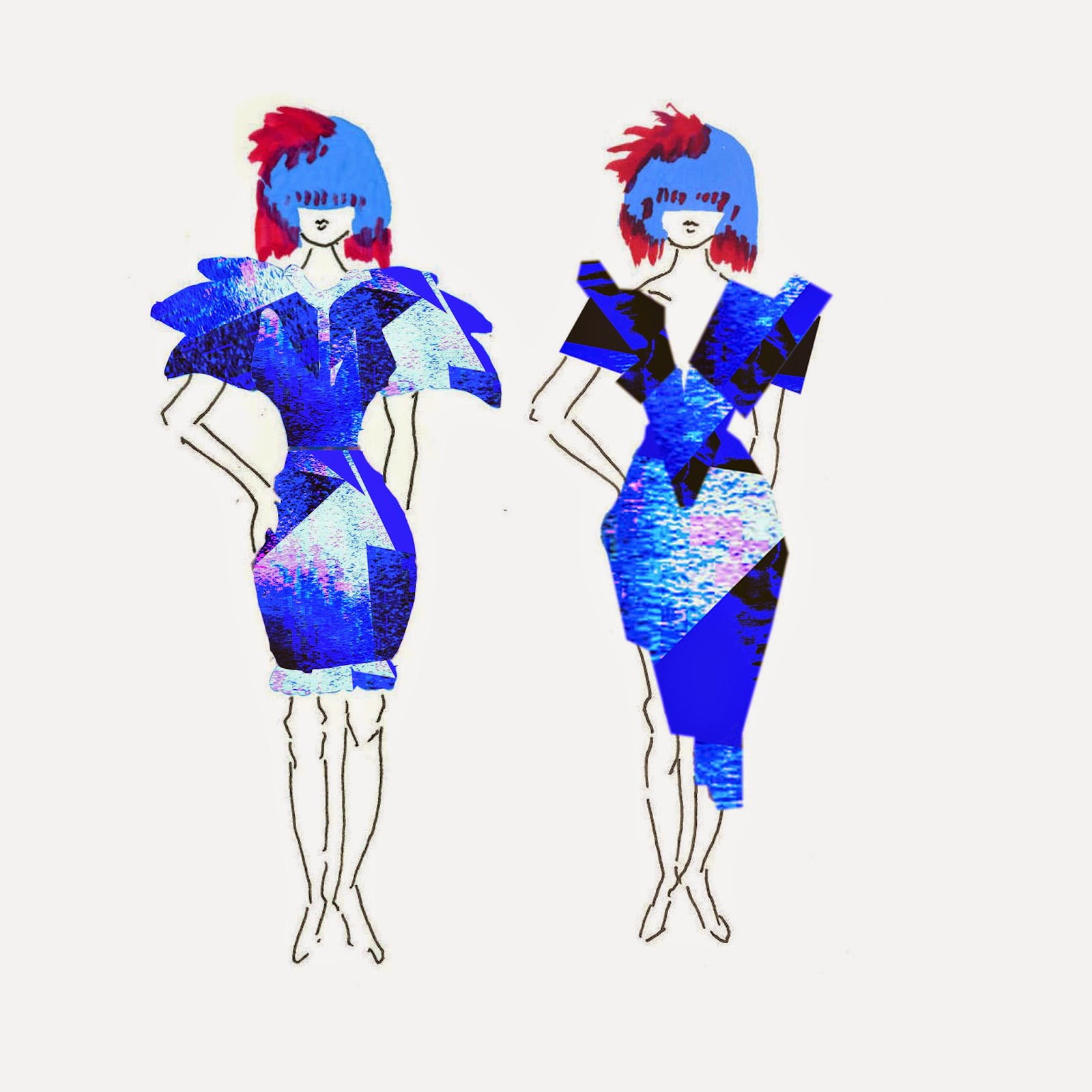In evaluation, the initial motivation for selecting this
concept was a strong desire to choose something that was very much different
from what I was used to working with. The idea of working with architecture
came about from the urban influences module in which I had to take photographs
and complete drawings around the city of Manchester. From this, I found a
particular passion for working with these structured inanimate objects and
enjoyed fusing with human elements. I felt that this offered a unique perspective
and brought the coldness of the architecture to life. It was necessary to
develop both drawings and paintings from the architecture photographs and I
soon realised that the photographs served as the primary tools to create my
final five print designs. As I wanted to display my paintings through my print
designs, I used one painting in Photoshop and modified the colours, cropped
shapes to create abstract compositions and also zoomed in on certain elements
of the painting where the colours contrasted. By doing this, I felt that I
managed to create an abstract unique designs that did not mirror my original
painting, but maintained certain elements of it.
I have identified that this concept work would be most
suited to a high fashion market as it would not suit a mainstream clientele.
This is due to the fact that it contains elements which are very much
associated with fine art principles. This tends to incorporate meaning into the
work and concepts that are presented. Also, my concepts could be deemed edgy and
bold, which are also characteristics associated with the high fashion industry.
Fashion, print and film fashion designers such as Alexander McQueen and Nick
Knight are two of my main inspirations as they incorporate themes which are
visually striking and unique. My main motivation in creating these pieces is to instill a sense of vibrancy and excitement in the observer. This to me is ‘art’
as if these vital components are missing, the artist as failed in emotionally
stirring the viewer.
I can envisage that my work will be for an upper market
clientele and for individuals who like to make a statement in their clothing.
The print designs would be best suited for high fashion catwalk clothing such
as elaborate dresses in which a greater surface area allows the patterns to be
seen more clearly.
The print designers Hannah Werning and Amy Sia have been
most influential in the development of my eight print designs. They both tend
to use a high level of contrasting colours and this was an elements that I was
particularly drawn to in my work. I liked this as it offered a degree of
interest and fantasy to the otherwise dull greyscale architecture images. The
combination of these two elements created something that instilled much
excitement in me personally as I felt it offered a kind of narrative to the
images.
In refining the concept, I decided to complete an art
inspired fashion film which consisted of a collaboration of my print designs
projected onto a model’s body. This was aimed to mimic and represent what clothes
could look like if my images were printed onto them. The model also carried out
certain edgy movements which represented the geometric nature of my prints. In
this film, I wanted to create an element of movement in the static print
designs in order to bring them to life. The choice of music was carefully
deliberated upon as I did not want this to be the primary focus. The music was
solely meant to accompany and add a sense of drama and atmosphere. As
previously mentioned in a blog post, the music used was all royalty free as I
felt this reflected a professional image. The inspiration for this film was
Showstudio which is a company that advertises fashion and uses a variety of art
inspired fashion films.
Thinking about the future, this experience has been useful
as it has offered me an insight into how my work could be used within a
professional capacity. I always aim to reflect on my learning and evaluate what
elements have been useful and also those elements that need improvement. I have
found this element exciting and challenging as it has pushed me in a different
direction in terms of my creative approach. I envisage that I may continue to
use similar colours that would lend themselves to a high fashion designs and
films. I will consider continuing using bold patterns in the development of my
future work as this offers significant scope for manipulation.
































.JPG)











